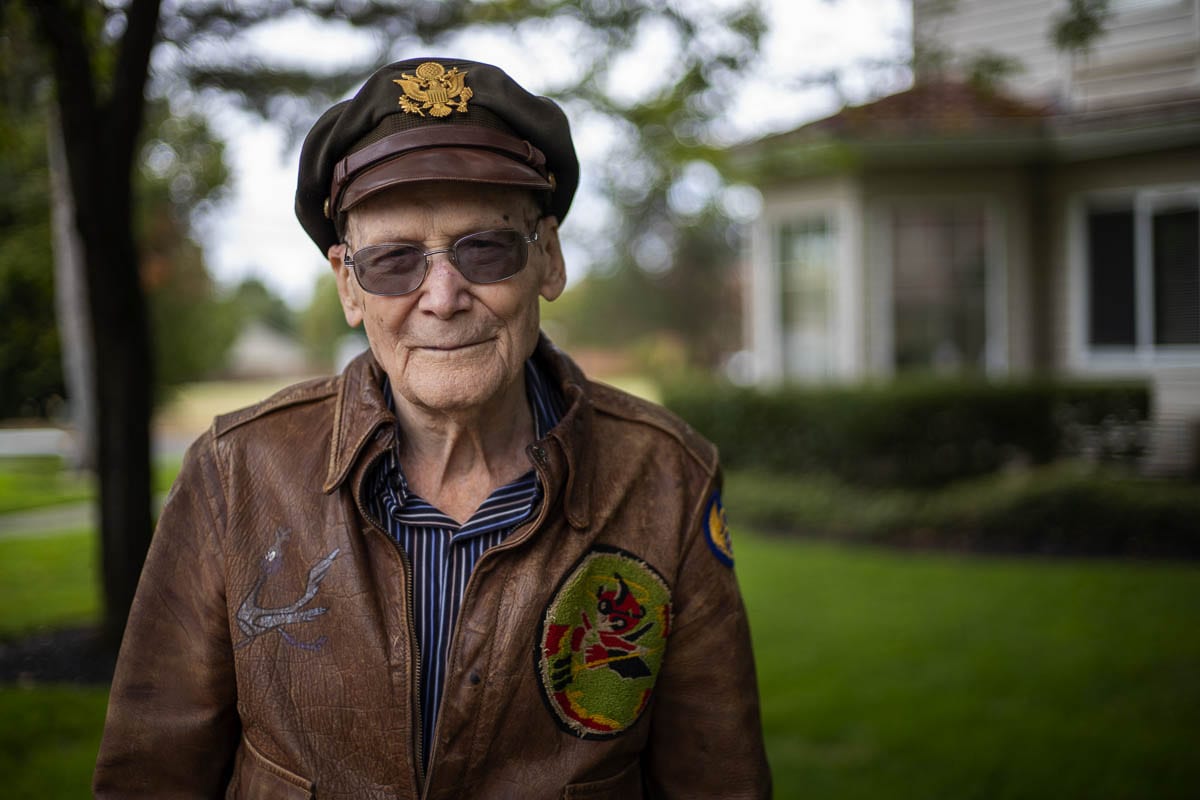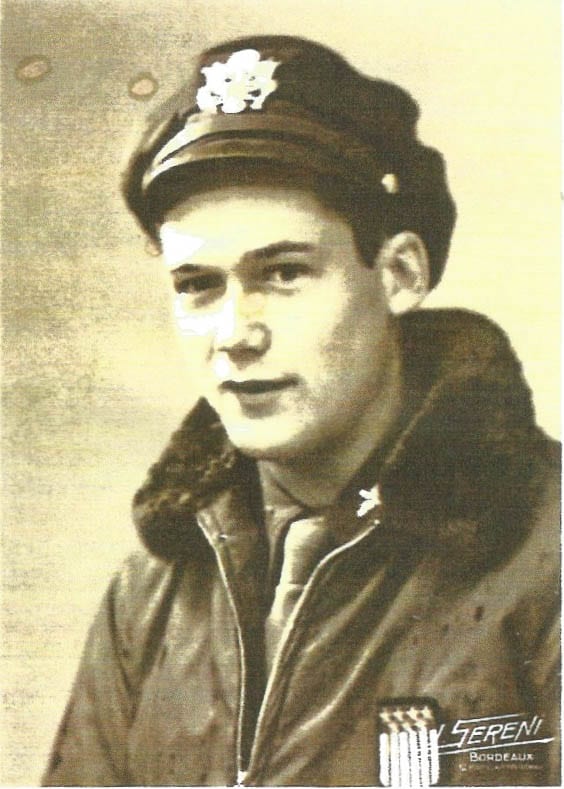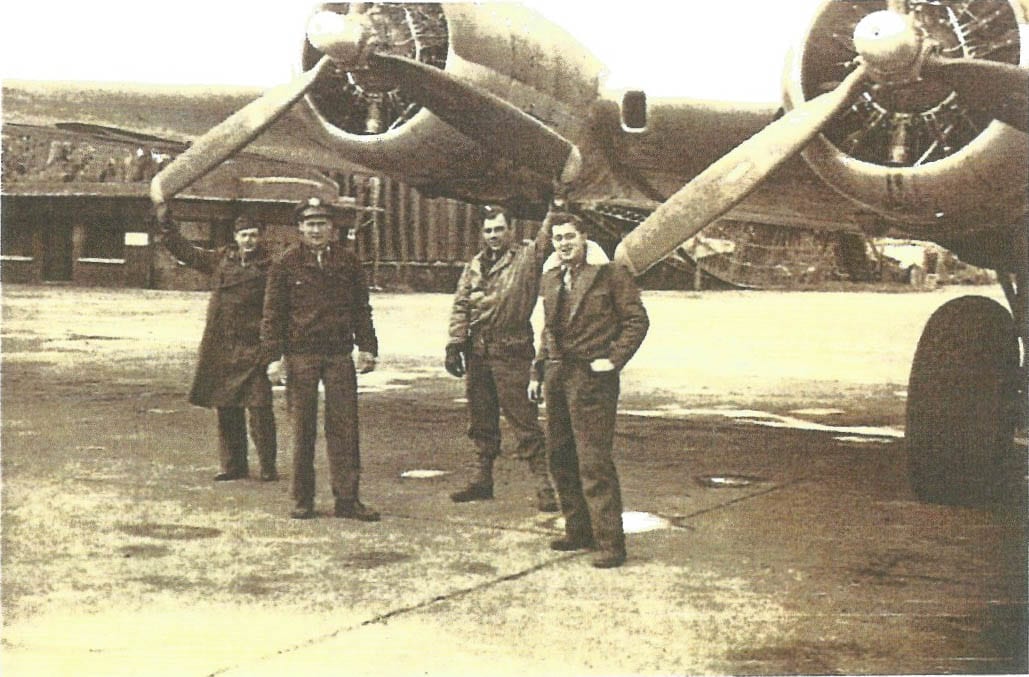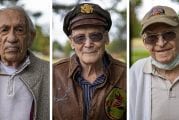The Ridgefield High School graduate flew 35 missions with the U.S. Air Corps over Germany in World War II
Chris Brown and Jacob Granneman
ClarkCountyToday.com
VANCOUVER — The events of December, 1941, when Japanese aircraft bombed US ships in the Naval shipyards at Pearl Harbor in Hawaii, killing 2,400 Americans, pulled the last remaining superpower not involved in World War II into the growing conflict.
By the time the war ended four years later, more than 16 million American men had been called up to active duty. 418,500 of them never made it home.
Harry Generaux, now 97 years old, grew up in Ridgefield, graduating from Ridgefield High School in 1941. He was working as a riveter at the Boeing Aircraft Company when the attack on Pearl Harbor happened.

In 1942, Generaux enlisted in the U.S. Air Corps, hoping to become a mechanic. Ultimately, he was invited to train to become a bomber pilot, as the military worked to increase its air attack program.
Ultimately, he was selected as a co-pilot on the notorious B-17 bomber, and shipped out to the European theater of the war in August of 1944.
“As soon as we got to London we knew we were in a war,” Generaux recalls, “because all the glass was blown out at the train stations, piles of debris all over.”
Generaux recalls that, before he left home for basic training, a neighbor came over and gave him a small bible that a relative had carried through World War One.
“I did the same thing. I put it in my shirt pocket,” Generaux says. “I wonder if that brought me luck.”

It may very well have, because Generaux brought back some harrowing tales of survival.
During one bombing run near Cologne, Germany, Harry recalls their B-17 getting hit by flack from anti-aircraft guns on the ground. One bit of shrapnel punctured an on-board oxygen tank, causing it to rupture.
In the chaos, Generaux says he realized his right rudder control had been severed as well, and a mistake caused him to draw perilously close to a plane in the configuration below them. Rolling out of the formation to avoid a collision, the flight crew realized a ball turret mechanism had caught fire, creating even more panic.
With their navigator frozen in terror, Harry made a decision to pull away and head back towards England. Suddenly, they realized strong winds would prevent them from making it back to base before they ran out of fuel.
With darkness all around them, and fuel running low, the crew scanned for a safe place to set down as Harry flew the plane about 1,000 feet above the ground.
Generaux says he suddenly noticed a beacon of light in the distance, caused by the setting sun flashing off of some debris, which led them to a battered small airfield.
As they landed, a group of citizens gathered around. One told Harry in broken English that they were in a small town near Bordeaux in the southwest of France.

Three days earlier, the area had been occupied by German troops, the citizens told them. The group had headed east, and Harry says if they had continued flying the direction they were, they likely would have flown over the enemy troops and been easily shot down.
“I attribute that to that Bible,” he says. “Good luck.”
After repairing their plane enough to refuel and take off, the crew sought to head to Paris. But without proper navigation to guide them, they again found themselves low on fuel and seeking a place to set down.
This time, they happened upon an active airfield being used by C-47 transport planes and U.S. paratrooper operations. After landing, they discovered a special Thanksgiving meal was being served in the mess hall of the base.
The crew arrived back at their base in England three weeks after taking off for their bombing mission over Cologne, Harry recalls, only to find out that their absence had gone completely unnoticed in the chaos of war.
Harry completed 35 total missions before returning to Ridgefield, marrying his high school sweetheart Margaret, and raising a son together. He was called back up in 1951 for the Korean war, and then retired from the military a year later.
Margaret passed away in 2019. Harry now lives at Van Mall Retirement center, where he remains an active member of the local community of veterans.
Today, fewer than 325,000 veterans of World War II remain alive in the United States, and nearly 300 of them pass away each day on average.
Clark County Today was pleased to be able to speak with Harry and several other veterans for this special Veterans Day project. Please watch his full video interview for even more amazing tales of his time serving our country.
See series here:
VIDEOS: Local World War II veterans share their experiences





